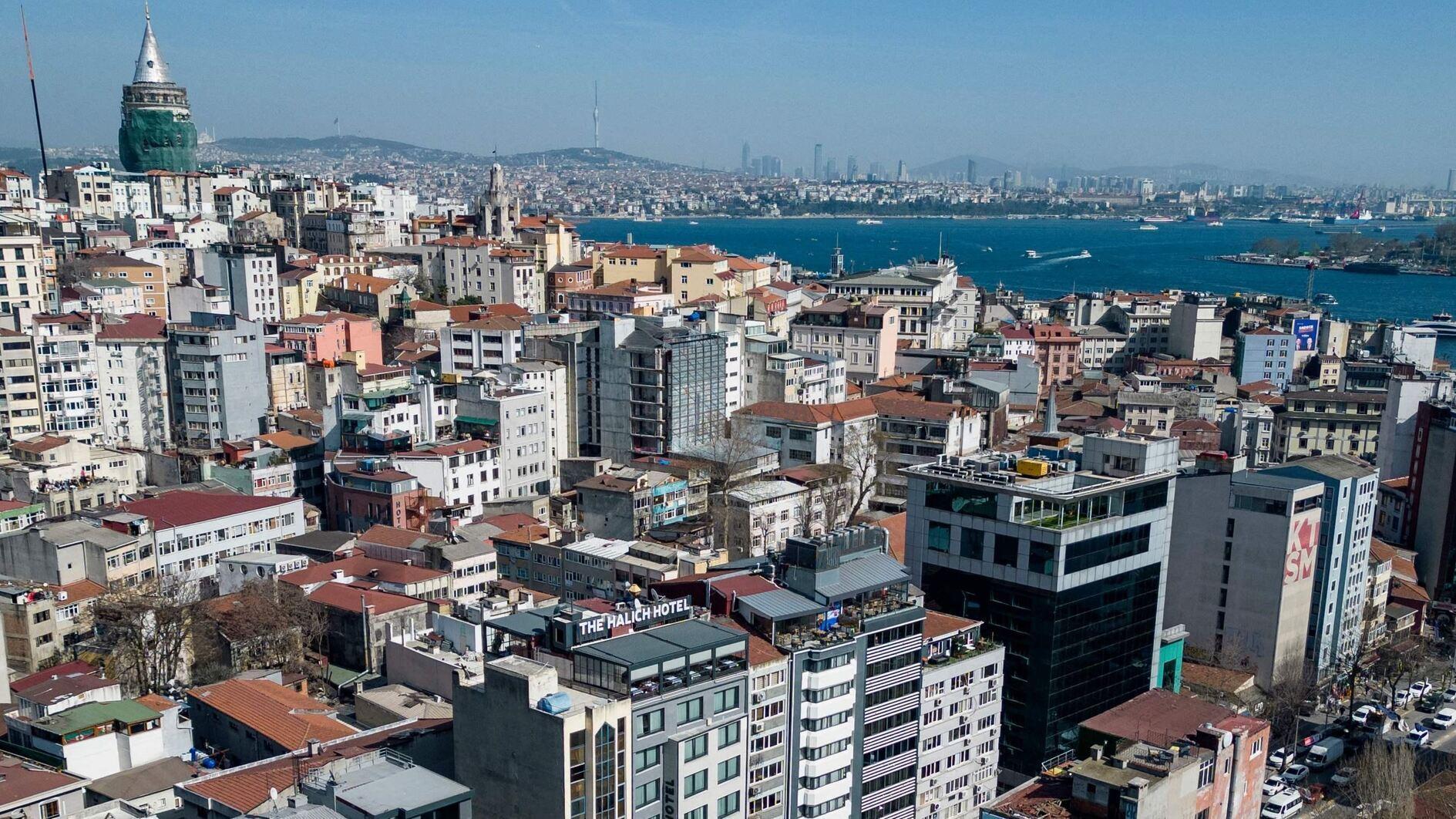Century-old fishing method by fisherman in İzmir’s Karaburun
Wilco van Herpen IZMIR - Hürriyet Daily News

This photo shows people fishing in Karaburun. ‘The best time for fishing the way we do is September, October and November when the weather is a bit rough,’ say fishermen. Photo by Wilco Van Herpen
Levent Balıkçı (Fisherman) is sitting on the edge of a cliff. He does not move at all. All he does is stare at the sea. With his sunglasses and his hat he looks like a Hells Angel. When he finally takes off his sunglasses I see a friendly face with shining eyes. Levent, his wife Havva and two friends are waiting for fish to come. They are fishermen but not the kind we know.His way of fishing is a difficult one and it requires a lot of concentration to detect a school of fish with the naked eye. Looking for the reflection of the sun on a fish scale in the water is an exhausting job. It is hot outside; in the sun the temperature rises to 45 degrees, but still Levent doesn’t move a muscle; he stares at the water.
Trap for the fish
In a little watchtower resembling a shack Havva sits on the ground. The watchtowers, there are two 30 meters apart from each other, are made entirely of wood. Havva is cleaning dried broad beans. With a stone she crushes the hard outer shell and removes the softer inner part. Hundreds of beans have been crushed when suddenly Levent shouts, “Fish, fish on the right side. Take the rope, get ready…”
Under me a fishing net rises up out of the sea. I am looking at the net that created a trap for the fish but am unable to detect any fish. Levent starts running down the hill slope, not without danger because the cliff he was waiting on is about 30 or 40 meters above sea level and the path is very steep. One of his friends follows him and together they board a tiny boat. Pulling the oars they approach the fishing nets within a minute and start pulling the net toward the boat.
After all the fish are picked out of the net the two men prepare the net for the next school of fish. They connect the net to the bottom of the sea and prepare the ropes that pull the net out of the sea and row back to the beach. Twenty minutes later Levent is back at his post. His friend is still down at the beach, taking the fish out of the boat and bringing them to a small shack on the beach. He washes the fish with seawater and puts them in a case after which he covers the fish with a cloth he squirted with seawater. This is the best way to keep the fish fresh and free from flies, he tells me.
I sit down with Levent again and we have a little chat. As far as he knows this fishing technique was done by his grandfather’s grandfather but it could be much older, he says. I make a quick calculation and it brings me to the year 1840.
At that time the people on the İzmir peninsula living in and around Karaburun were fishing like this. The advantage is that you do not need a big boat and go onto the sometimes wild sea.
“The best time for fishing the way we do is September, October and November when the weather is a bit rough. Then we sometimes catch as much as 50 kilos of fish per day. Today is a lucky day; generally during summertime we do not catch that many fish. In the past our work was much better, there were more fish, the fish were bigger and we did not have the competition of the big fish trawlers and the fish farms that you find everywhere in front of the coast.”
Fish farms disadvantage
There is another disadvantage from those fish farms, he tells me. The fish at those farms are fed with bait but, especially during bad weather, part of the bait drifts away and attracts the fish that are swimming free in the sea.
“Because of the fish farms, the fish in the open sea have changed their route and they do not swim along the coastline anymore. Most of them go into deeper water, which makes it impossible for us to catch them.”
I have seen those kinds of shacks a number of times in Turkey but never saw people using them.
This was the first time and I am impressed by the skills of the people working here. Nowadays fishermen use radar and sonar to find big schools of fish but those people use nothing more than their eyes and a couple of stones. A century-old profession is on the brink of extinction. I hope his son will make the right choice and also become fisherman like his father.
















